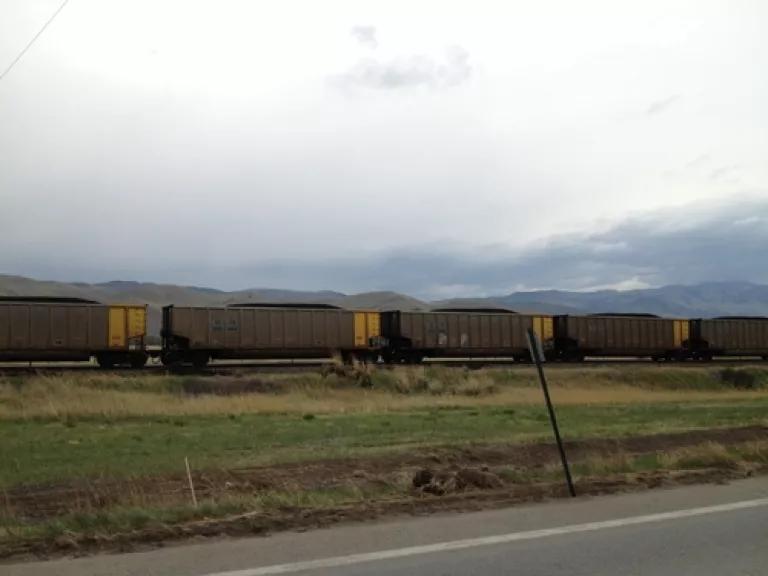
This past weekend I was at the Northwest Energy Coalition’s Spring meeting in Kalispell, Montana. I flew in a day early and did a high-water float down 16 miles of the Madison River outside of Bozeman with my colleague, Matt Skoglund. He maneuvered the boat and let me do my worst to the brown and rainbow trout hiding out on the big spring river’s slower moving edges, drop-offs and holes. I got a couple fish on the line, but mostly just casted, snagged, and lost Matt’s streamer lures while he adeptly steered us downriver. We also took breaks from the float to hunt Morel mushrooms—no luck there either.
It was a day full of life: we saw two bald and one golden eagle; two beavers—one dragging a tree upstream under water; a raccoon out in the shallows fishing; lots of deer, including one swimming across the full river; sand hill cranes making their raucous, dinosaurian calls; hawks soaring and screeching; swarms of cliff sparrows and cliff-dwelling Canadian geese; and enough different kinds of ducks to test Matt’s identification skills. We had some spirited discussion on the most remarkable sight of the day. One of my favorites was the flocks of white Pelicans. I love watching their dingier-colored cousins float just above the waves off California’s shoreline. These more elegant relatives are miles from their winter homes on the Central American coast.
On the drive from Bozeman to Kalispell, I looked out through the spring-green forests, fields, and flushed rivers and creeks and white-capped Mountains.
Outside of Helena, I passed a long Burlington Northern Santa Fe Railroad (BNSF) train- filled above the brim with open containers of Montana Coal. I take some extra interest in BNSF a company that borrows use of my hometown’s name. It is Warren Buffet's company and its own website claims that it “hauls enough coal to power one out of every ten homes in America.” Mr. Buffet’s MidAmerican Energy also owns Pacificorp, one of the region’s big utilities and heavily invested in coal.
At the conference, the future of this dirty, toxic stuff in Montana and across the Northwest was on the agenda- with some great information on Montana and Powder River Basin coal.

Coal consumption is down and dropping across the United States, though many power plants continue to hold on by fighting health and environmental standards, largely reflecting utility executives’ willingness to throw good money after bad.
Montana, like many western states, has been heavily reliant on resource extraction. Montana is known for its rivers and mountains, but the Powder River Basin of Southeastern Montana and Northern Wyoming is the largest coal producing region in the country- producing 40% of US coal (mostly from Wyoming- but with plenty of mining in Montana, too). Considering the impacts of strip-mining, this coal has been sold from publicly owned lands by American taxpayers at scandalously low prices. If you haven’t seen what strip-mining does to the land, I recommend google-mapping Colestrip, Montana.
Coal extraction continues, and if the US shuts down its aging coal fleet, Mr. Buffet’s BNSF could just carry more and more to export. The climate won’t know the difference. Increasing the supply of coal on the world market will erode any benefit from reduced consumption in the US. If we are serious about addressing the climate change crisis, this coal is like the Canadian Tar Sands: we have to keep this stuff in the ground.
There are some reasons to be hopeful. This year Montana should complete the installation of over 600 MW of wind power, adding to the regional total of over 6,000 MW. There is plenty of renewable energy- and energy efficiency- potential in this region to displace all the fossil power. Mr. Buffet’s MidAmerican is also a major renewables player. If we get the policies right, his money will follow.
Farther up the road, in the Flathead National Forest, these big ladies crossed the road and we paused to sum each other up:

